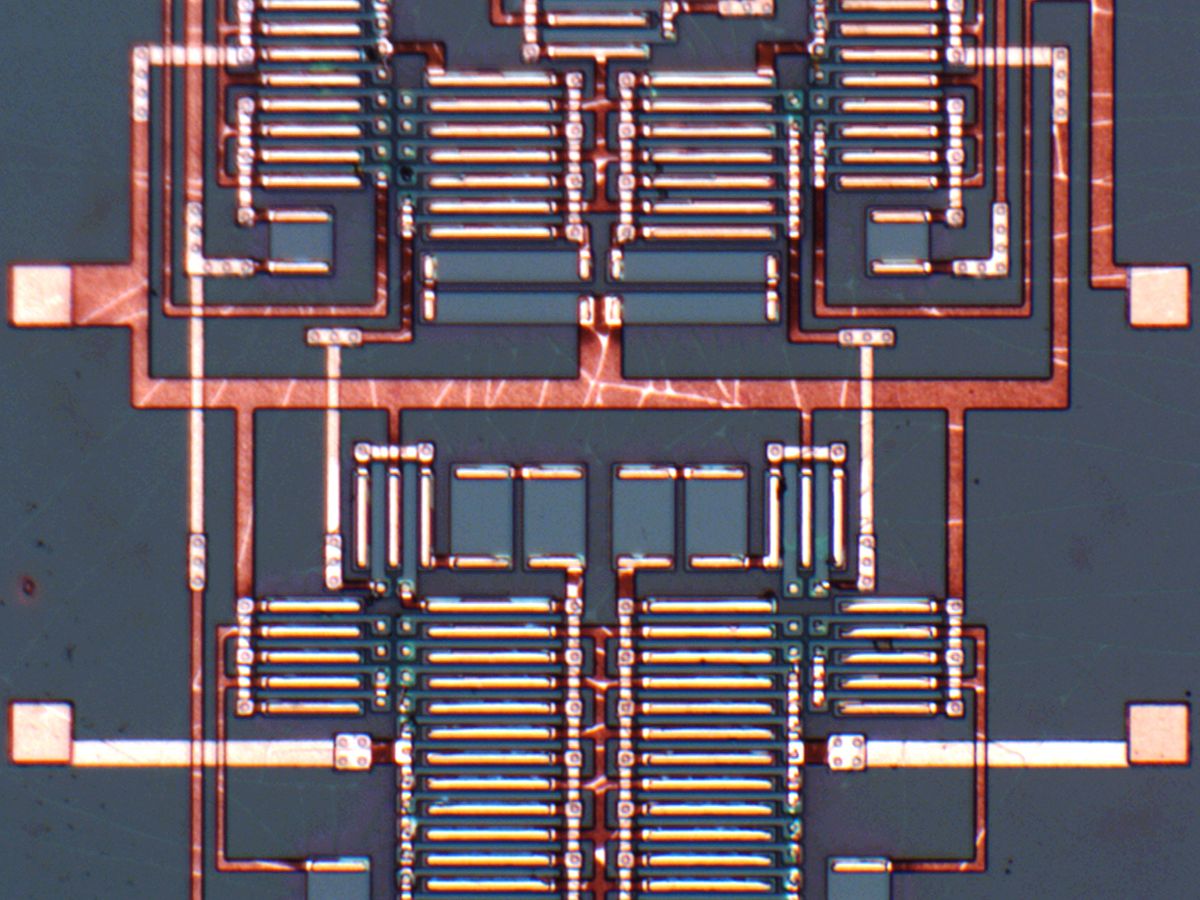21 November 2012—Researchers at Case Western Reserve University have pushed heat-resistant integrated logic circuits to a record 550 °C, a notch hotter than in NASA’s tests of integrated circuits.
Conventional silicon circuits break down beyond 350 °C, but the ability to get sensor information from high-temperature environments, such as inside a jet engine or in a deep oil well, could improve efficiency and save millions of dollars—not to mention provide capabilities for space missions to extreme locations like Venus. Research into silicon carbide logic ICs could move signal processing and control closer to the point of sensing, thereby removing the need for long wires, which could fail, or cooling contraptions, which complicate systems.
For example, a typical jet turbine engine requires a host of sensors to synchronize some 20 fuel nozzles, says Steven L. Garverick, a Case Western researcher on the project, which was detailed in the October 2012 issue of IEEE Electron Device Letters. Better sensors placed closer to the inside of the engine would allow for a fuel mixture that would let an engine run both lean and smooth, lowering emissions and saving oil. If the mixture is too lean, the flame from one or more of the nozzles could extinguish, and the engine could stall.
Sensing pressure and other parameters at each nozzle would optimize the air-fuel mixture while avoiding “lean blowout” stall, Garverick explains, adding that the nozzles operate at very high temperatures, over 1000 °C at the flame tip. The temperature inside the nozzle is cooled to less than 600 °C by the fuel flow, and that’s where a sensor and IC might be placed.
The Defense Advanced Research Projects Agency (DARPA), which funded the research, wants to use this technology on missiles, according to Garverick. The agency would like to collect sensor information during explosions. “The sensor would not survive,” he says, “but the information would be valuable.”
Silicon carbide allows for high-temperature devices because of its wide bandgap. In ordinary silicon, high temperatures can kick electrons into the conduction band, causing errant currents to flow and fouling logic operations. Silicon carbide’s bandgap is so much wider that heat doesn’t cause much conduction. The electronics tested were made out of the 6H polytype of silicon carbide—“H” referring to the hexagonal crystalline structure and “6” to the particular stacking sequence.
The Case Western silicon carbide ICs depend on a different kind of transistor than those in silicon-based computer chips. Computers today use CMOS logic, which depends on transistors that contain a thin sliver of insulator inside them. But insulators for similarly structured silicon carbide transistors don’t work well at extreme temperatures. So Garverick and his colleagues turned to a device called a junction field-effect transistor (JFET). These were more commonly fabricated in the 1960s and don’t require an insulator.
Engineers who design systems for use in harsh environments are intrigued by these JFET-based logic chips, says Philip Neudeck, a NASA Glenn Research Center electronics engineer. His team developed silicon carbide ICs that functioned at 500 °C temperatures for thousands of hours. “We get calls like, ‘Man, I can really change the way I design my system if I have this capability,’ ” says Neudeck. Their first generation of ICs integrated fewer than 10 transistors, but the NASA Glenn team is now working on increasing that to somewhere in the range of 100 to 300 transistors, all while maintaining or increasing their durability at high temperatures.
According to Neudeck, a drawback to the work at Case Western is that it doesn’t show how long the electronics can reliably perform at 550 °C, which is essential for most applications. But Garverick says testing failure mechanisms and longevity was not the aim of the recent demonstration.
ICs could reach even higher temperatures and levels of complexity. What’s holding the technology back is not the transistors but other components, such as the chip packaging, the interconnect metal, and the contacts from the interconnect metals to the transistors, all of which are difficult to make tough enough to survive cycles of extreme temperatures. Silicon-carbide researchers cannot rely on what they know about silicon to find a solution.
“How do you get a multilevel interconnect process that can withstand the torture, if you will, of the high-temperature, prolonged operation, plus thermal cycling?” asks Neudeck. “That is not a trivial challenge.”
